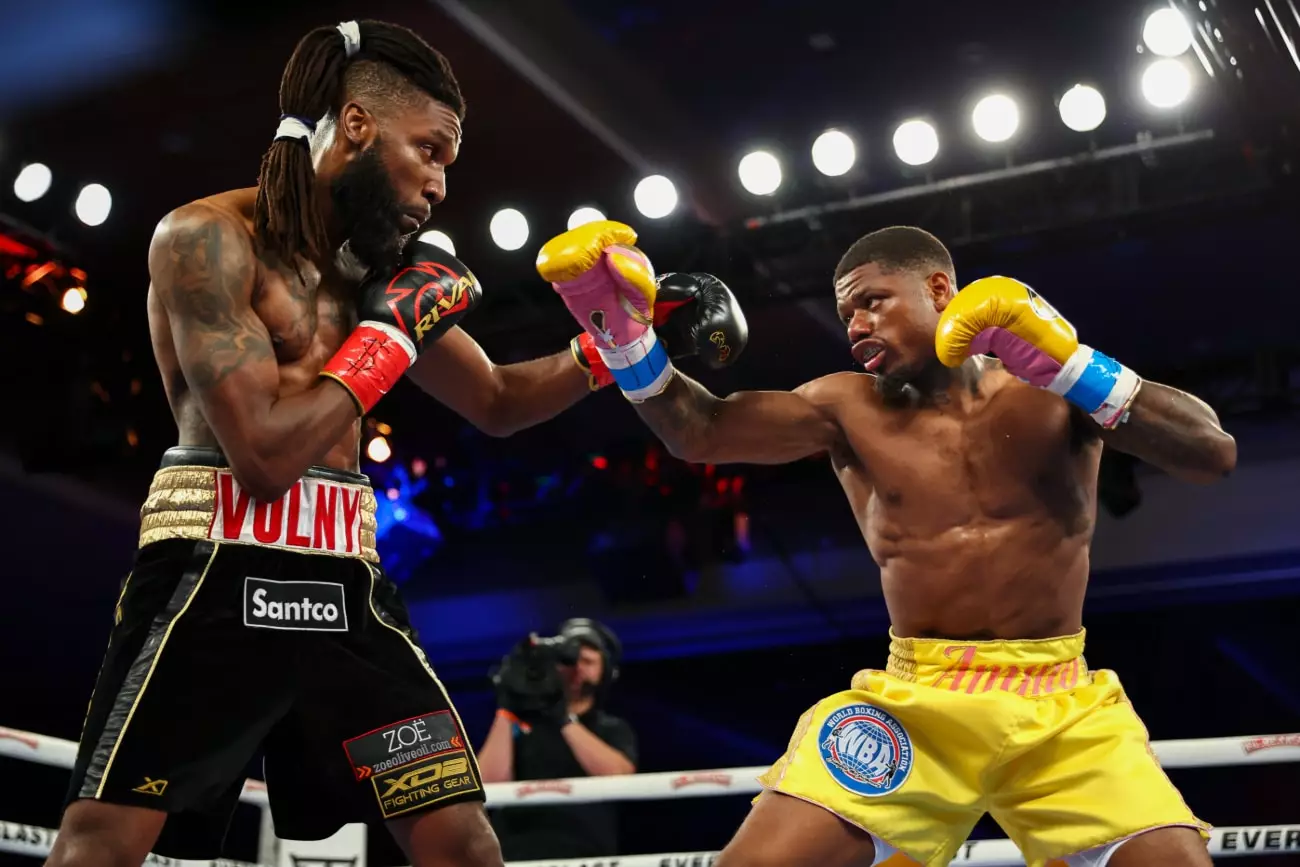In a recent matchup held at the Caribe Royale in Orlando, Florida, Austin ‘Ammo’ Williams notched a unanimous decision victory against Patrice Volny, bringing his record to 18-1 with 12 knockouts. While victory is the ultimate goal in boxing, the nature of Williams’ triumph raises eyebrows concerning his readiness for championship-level competition. With scores of 118-110, 116-112, and 115-113 from the judges, it’s clear that the decision favored Williams, but a closer inspection reveals a more complex narrative.
Williams, promoted by Eddie Hearn, fought in a manner reminiscent of a workhorse rather than a thoroughbred. His performance can be characterized as industrious yet lacking in the explosive impact often expected from a fighter eyeing a title shot. Throughout the 12 rounds, he efficiently outworked Volny in terms of volume, aiming to accumulate points rather than deliver decisive blows. This raises questions about the strategy employed and whether it suffices at higher levels of the sport.
The Power Struggle: Williams vs. Volny
While Williams busied himself throwing an array of punches, often appearing to ‘arm punch’ his opponent, it was Volny who made the night exciting with crisper, more impactful shots, underscoring the age-old boxing debate: is it better to overwhelm your opponent with sheer activity or to score with powerful, clean hits? Fans found themselves divided on social media, grappling with the dual narratives playing out in the ring.
In this case, many observers felt a draw would have been more appropriate, taking into account Volny’s effective power against Williams’ relentless—but less damaging—output. Just how much stock should be placed in the judges’ favoring of point-scoring over harder strikes comes into question in bouts like these. Was it merely a nod to technicality or a genuine reflection of dominance, even if it lacked the drama typical of more compelling fights?
Title Shot? Pump the Brakes on Williams
Eddie Hearn has already expressed ambitions of catapulting Williams into title contention, but based on this performance, such aspirations may be premature. The champions in the middleweight division—Erislandy Lara, Carlos Adames, and Janibek Alimkhanuly—are not models of vulnerability. Each possesses a skill set and knockout power that could expose Williams’ apparent disadvantages.
Durability and sheer volume can carry a fighter far, but when it comes to elite-level competition, one must possess a mix of skill, power, and strategy. Against lesser opponents, Williams may excel; however, against the ranks of top-tier contenders, it remains to be seen whether his current style can translate into the necessary success to secure one of the sport’s prestigious belts.
Berlanga’s Resurgence: A Different Story
In contrast to the more subdued performance of Williams, Edgar Berlanga provided a stark illustration of knockout capability on the undercard. With a powerful first-round knockout of Jonathan Gonzalez-Ortiz, Berlanga boasted a strong revival, demonstrating how critical clean, effective striking is in solidifying one’s status in the boxing hierarchy. Berlanga’s ability to score three knockdowns in a single round served as a much-needed reminder of the electrifying potential within the boxing world.
The juxtaposition of these two fighters highlights the different paths they may take as they pursue their careers. While Williams’ recent performance leaves much to be desired, Berlanga’s success reaffirms the importance of not only winning but winning impressively. In boxing, the style points can sometimes weigh as heavily as the victory itself, shaping perceptions and futures alike.

